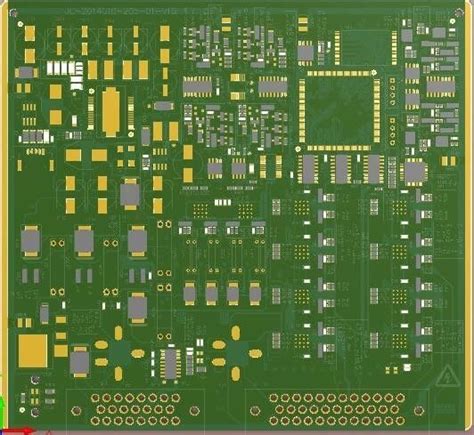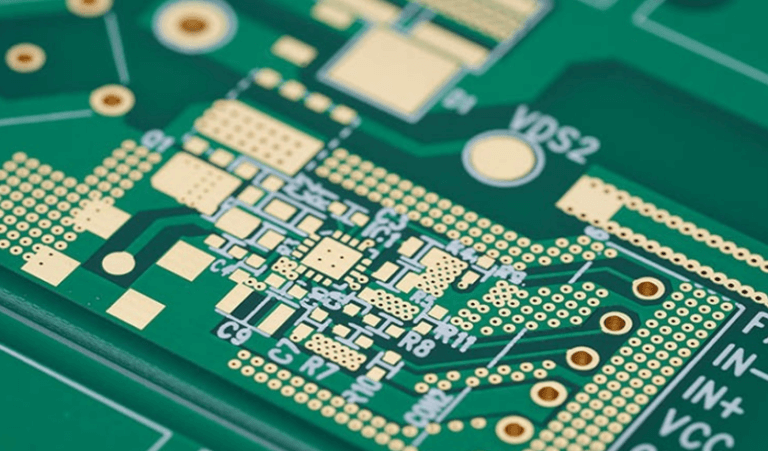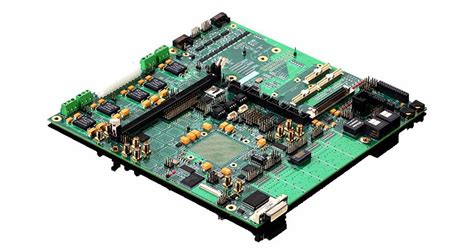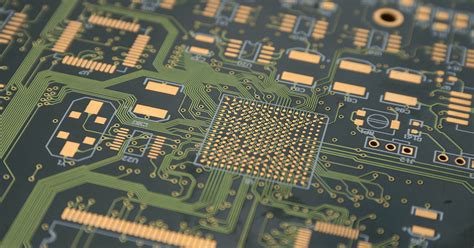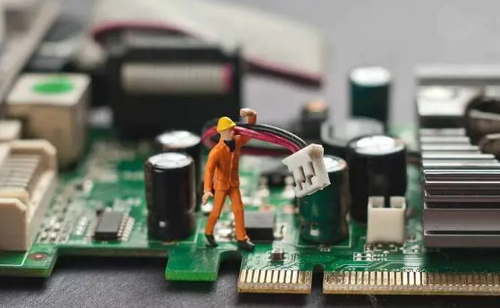Unlocking Innovation: The Ultimate Guide to Custom Circuit Board Printing
Key Takeaways
Understanding the complexities of custom circuit board printing is essential for those involved in the pcb manufacturing sector. As you explore options offered by various pcb manufacturing companies, you’ll find that selecting the right partner significantly influences your project’s outcome. The balance between pcb manufacturing cost and quality is critical—investing in a reliable provider can prevent expensive errors down the line. It’s important to stay informed about the best practices in the pcb manufacturing business, as these can directly enhance efficiency and innovation in your designs. The agility of rapid prototyping allows you to test and iterate on ideas quickly, fostering an environment where creativity can flourish without excessive resource expenditure. By prioritizing quality assurance at every stage, you ensure that your final product meets or exceeds industry standards, ultimately paving the way for more successful outcomes. Embrace these insights to elevate your approach to electronic solutions and position yourself at the forefront of advancements in custom circuit board technology.
Introduction to Custom Circuit Board Printing
In today’s fast-paced technological landscape, custom circuit board printing has emerged as a crucial element for innovation and efficiency in electronics design. You may find that understanding the intricacies of pcb manufacturing is essential to optimize your designs and reduce production challenges. With a plethora of pcb manufacturing companies available, it is critical to evaluate your options carefully, especially considering factors like pcb manufacturing cost and production turnaround times. Leveraging custom solutions allows you to effectively fine-tune parameters to meet specific project requirements.
By embracing the advancements in custom circuit board printing, you open the door to rapid prototyping, enabling quicker iterations and enhancements. This aligns with growing market demands and encourages a more agile development process. It is crucial, however, to maintain a keen eye on quality assurance as you navigate through your PCB manufacturing business decisions.
To enhance your projects and implement effective strategies, consider focusing on essential aspects such as material selection and fabrication techniques. As you strategize for your next project, remember that the right choice in custom circuit boards can significantly elevate the performance of your electronic solutions.
“Investing time in understanding the nuances of pcb manufacturing will yield substantial returns in product reliability and performance.”
Explore more about cutting-edge techniques and reliable suppliers at Andwin PCB where innovation meets reliability.
The Latest Techniques in Circuit Board Fabrication
In the fast-evolving field of pcb manufacturing, staying abreast of the latest techniques can significantly enhance your project outcomes. One of the most notable advancements is the integration of additive manufacturing, which allows for intricate designs and reduces material waste during the pcb manufacturing process. This method, through techniques such as 3D printing of circuit boards, is revolutionizing how you conceptualize and construct custom circuits. Additionally, laser cutting is becoming increasingly prevalent as it offers precision and efficiency, enabling you to achieve complex geometries that traditional methods may struggle with.
Furthermore, advancements in fine-line technology allow manufacturers to reduce trace widths significantly, enhancing density without increasing size, which is vital for compact electronic solutions. When working with different pcb manufacturing companies, it’s essential to understand their capabilities regarding these new technologies and how they can influence your pcb manufacturing cost. Choosing a partner who embraces innovation will not only ensure high-quality results but also contribute to a more responsive and efficient manufacturing business. Embracing these modern techniques can elevate your projects, making them more competitive in today’s market.
Materials that Matter: Choosing the Right Components
In the realm of pcb manufacturing, selecting the right materials is critical to achieving success in your projects. It’s essential to consider not only the pcb manufacturing companies that will handle your order but also the specific components you choose for your circuit boards. Using high-quality substrates, such as FR-4, allows for durability and effective heat dissipation, which is paramount in modern electronic applications. You should also pay attention to the type of pcb manufacturing cost associated with different materials; premium components may offer higher initial expenses but can provide long-term savings through enhanced performance and reliability.
When evaluating options, think about how materials can impact overall functionality and performance. For instance, choosing copper with an appropriate thickness will influence electrical conductivity and resistance within your designs. Additionally, consider other factors such as environmental impact and material availability when collaborating with pcb manufacturing businesses to fulfill your design needs. By making informed choices, you can significantly enhance the quality of your custom circuit boards while driving down costs in the long term. Whether you’re developing prototypes or large-scale production runs, prioritizing component selection will set a strong foundation for innovative electronic solutions.
The Benefits of Rapid Prototyping in PCB Design
Rapid prototyping plays a crucial role in the pcb manufacturing process, allowing you to transform your ideas into tangible products quickly and efficiently. This approach benefits not only experienced professionals but also newcomers in the pcb manufacturing business, enabling faster iterations and improved design accuracy. By utilizing cutting-edge technologies, you can significantly reduce the pcb manufacturing cost, allowing for more competitive pricing and streamlined production.
One of the primary advantages of rapid prototyping is its ability to test and refine designs before committing to large-scale production. This means you can identify potential issues early, ensuring that your circuit boards meet the required specifications and operational standards. For those looking to work with reputable pcb manufacturing companies, this iterative process guarantees a higher quality output as it establishes a foundation for quality assurance practices.
Incorporating tables into your workflow can also enhance clarity in your design process. For instance:
| Prototyping Method | Advantages | Disadvantages |
|---|---|---|
| 3D Printing | Quick turnaround, Design flexibility | Limited material choices |
| CNC Machining | High precision | Longer setup times |
| PCB Etching | Low cost, Good for small runs | Time-consuming process |
Each method has its strengths and challenges, but rapid prototyping allows for quicker evaluations of these techniques, aiding in selecting the most suitable approach for your needs. By embracing rapid prototyping in pcb manufacturing, you are poised to enhance overall project outcomes, drive innovation, and remain competitive within the ever-evolving electronics landscape.
Quality Assurance Practices in Circuit Board Manufacturing
In the realm of pcb manufacturing, ensuring quality is paramount to the success of any project. You need to implement rigorous quality assurance practices to maintain high standards and meet customer expectations. Begin with a thorough understanding of the pcb manufacturing companies you collaborate with; it’s essential to choose partners who prioritize quality in their processes.
Conduct regular inspections and testing throughout the production cycle, focusing on critical elements such as solder integrity, trace connectivity, and component placements. Additionally, leveraging advanced testing equipment and techniques can significantly enhance the reliability of your products while keeping pcb manufacturing costs in check. Adopting a proactive approach to detecting potential flaws early in the process enables you to minimize waste and reduce costly rework.
Moreover, consider integrating automated systems for monitoring quality indicators during production. This shift not only improves consistency but also streamlines operations, establishing a foundation for a sustainable pcb manufacturing business model. By fostering a culture that prioritizes quality assurance, you can effectively boost the reputation of your products and ensure that they meet uncompromising industry standards. Ultimately, implementing these practices will empower you to deliver exceptional circuit boards that drive innovation within your projects.
Efficient Production Methods for Custom PCBs
In the ever-evolving landscape of custom circuit board printing, understanding efficient production methods is crucial for gaining a competitive edge. When you’re involved in pcb manufacturing, you want to ensure that your processes not only maximize quality but also minimize costs. By adopting advanced technologies and methodologies, you can streamline your pcb manufacturing business effectively. For instance, utilizing automated assembly techniques can significantly reduce labor costs and improve precision in the assembly of components on your circuit boards.
Moreover, engaging with effective supply chain management can lead to a reduction in pcb manufacturing cost by ensuring that materials are sourced efficiently and are readily available when needed. This not only avoids delays but also allows for scalability, enabling you to cater to varying project demands without compromising on quality. Collaborating with reputable pcb manufacturing companies can also enhance your production capabilities, offering access to innovative materials and techniques that can further refine your design.
Incorporating lean manufacturing principles is another strategy that can lead to more efficient operations. By minimizing waste and optimizing production schedules, you create an environment where your team can focus on delivering high-quality products tailored to specific needs. Overall, these efficient production methods not only set the stage for successful projects but also empower you to innovate continuously within the realm of electronics design.
Practical Tips for Designers and Engineers
When embarking on the journey of custom circuit board printing, there are several practical tips to keep in mind to enhance your design and production experience. First, understanding the different pcb manufacturing processes available can significantly impact your project outcomes. It’s crucial to collaborate with reputable pcb manufacturing companies that align with your needs and can meet your specific design criteria. Selecting the right materials is fundamental; consider using high-frequency substrates if your application demands enhanced signal integrity. Additionally, being mindful of pcb manufacturing cost during the design phase allows for optimized layouts that minimize waste and keep expenses in check. Don’t hesitate to leverage rapid prototyping; it’s an effective method to quickly iterate on designs before committing to larger production runs. Always prioritize quality assurance throughout the stages of development; implementing thorough testing protocols will help catch any issues early on in the pcb manufacturing business cycle, leading to greater reliability and performance in your final product. By incorporating these strategies, you pave the way for innovative solutions and ensure a smoother process from concept through production.
Future Trends in Custom Circuit Board Technology
As you look toward the future of custom circuit board printing, several trends are poised to shape the landscape of pcb manufacturing. One notable advancement is the increasing integration of smart technologies, which enable circuit boards to not only perform their functions but also communicate and adapt in real-time. This trend is driving many pcb manufacturing companies to explore advanced materials like flexible and organic substrates, enhancing the versatility and robustness of custom boards.
Additionally, sustainability is becoming a central focus, with a push toward reducing the pcb manufacturing cost through eco-friendly materials and processes. The demand for lower costs and high-quality outputs invites innovations such as additive manufacturing and precision etching, which enhance the efficiency of production methods. To remain competitive in the growing pcb manufacturing business, companies are investing in AI and automation to streamline operations, ensuring that they can meet both current needs and future demands effectively.
Another exciting development involves miniaturization, as consumer electronics push the boundaries of size reduction while increasing functionality. As you navigate this evolving sector, staying informed about these trends can significantly benefit your design considerations, leading to innovative solutions that not only meet but exceed client expectations in electronics design.
Conclusion
As you reflect on the essential aspects of custom circuit board printing, it’s important to recognize the significant impact that pcb manufacturing can have on your projects. Understanding the intricacies of pcb manufacturing companies is crucial; selecting a partner with expertise can streamline your design process and ensure quality output. Additionally, being aware of the pcb manufacturing cost is vital for budgeting and planning, allowing you to manage resources effectively without compromising on innovation. Whether you are contemplating the initiation of a pcb manufacturing business or enhancing existing operations, integrating rapid prototyping and quality assurance practices will not only boost your efficiency but foster creativity in your designs. Embracing these strategies will empower you to unlock new opportunities in electronics design, setting a solid foundation for future success.
FAQs
When exploring options for custom circuit board printing, you might find yourself with several questions about the intricacies of the pcb manufacturing process. Understanding these aspects is crucial for making informed decisions, especially if you’re considering partnering with pcb manufacturing companies. One of the primary considerations is the overall pcb manufacturing cost, which can vary significantly based on factors such as materials, complexity, and volume. Another key factor to ponder is the reliability of these enterprises; you want to ensure that their quality assurance practices align with your standards.
If you’re launching a new idea or product, you may also want to think about how rapidly your designs can transition from concept to market-ready prototypes. Engaging with a reputable pcb manufacturing business can streamline this journey by providing not only timely production but also expert insights into design optimization.
If you have specific inquiries or are looking for detailed assistance, don’t hesitate to explore more about effective solutions and partnerships in custom circuit board printing.

